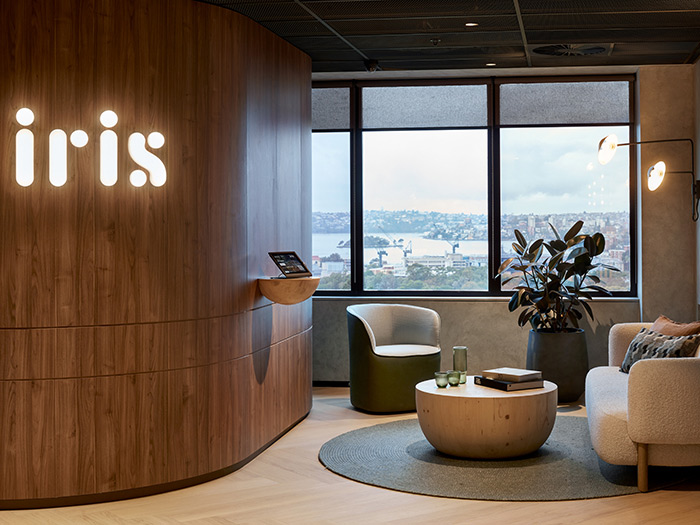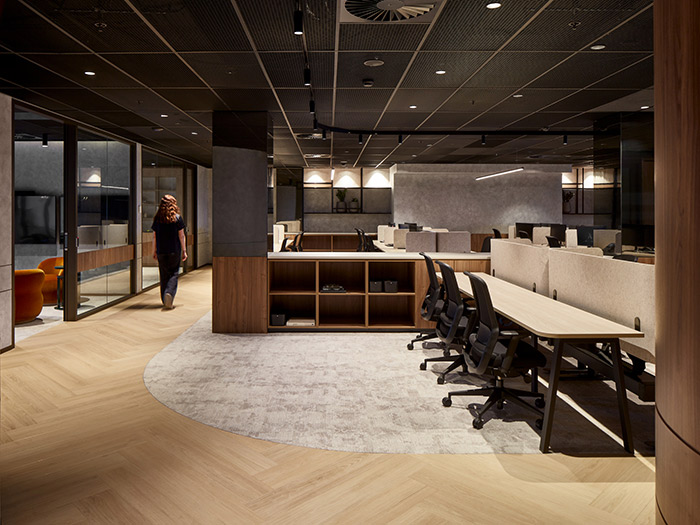As a leading British manufacturer of quality ceilings and bespoke architectural metalwork with global presence, SAS International has been elevating projects around the world since 1968. Over the years, this trailblazing company has become one of the leading providers of innovative solutions for industry professionals in Australia. What makes them an architect’s favourite?

For starters, SAS International manufactures all their products which means they don’t have to rely on third parties and have complete control over the quality of their offering. Backed by an outstanding expertise spanning almost six decades, an unwavering commitment to technological advancement and collaborative partnerships with designers, specifiers and installers, no wonder SAS International has become a popular go-to.
SAS International: A legacy of sustainability
However, it’s SAS International’s commitment to sustainability that truly sets them apart. A little while ago, the company made waves by becoming the first metal ceiling manufacturer to achieve Cradle to Cradle Certified® Bronze (Version 4.0). And now, SAS International solidifies their status as an environmentally-driven industry leader by upgrading SAS310 – their signature lay-in tile system which offers the facility to design the metal pan suspended ceiling – into the SAS Horizon Low Embodied Carbon range.
“SAS310 is a traditional system that has been part of our product range for over a decade and has contributed to many commercial building fit-outs in Australasia,” says Craig Penton, SAS General Manager.Suspended from an exposed modular top hat or tee bar grid, the lay-in tiles offer both two-way and one-way configurations in the versatile SAS310 grid. Functional and high performing, the metal pan ceiling tiles come in a plethora of shapes and sizes, which makes them suitable for a variety of projects. Plus, perforations up to 65% open area enable the architects and designers to use the tiles alongside energy-efficient chilled beams.

Now, with an impressive lifespan of 40 years backed up by a market-leading 25-year warranty, the product is bound to become a go-to for any future-forward architect, designer or specifier. Especially because the benefits of the SAS310 upgrade are much more significant.
The game-changing benefits of the SAS310 upgrade
SAS International’s product upgrade brings about a groundbreaking fusion of environmental profile, superior acoustic performance and smart design that allows installers to use an existing framing system to update the ceiling. As a result, SAS310 stands out as an excellent alternative to mineral fibre.
“Many of the traditional installation methods are based on modular and T24 ceiling systems, allowing the SAS310 lay-in system to work universally with both grid systems,” Craig explains. “It's as easy as dropping our tile to suit the existing system, which means the installers can simply take the mineral fibre tiles out and slot the SAS130 tile in its place, utilising the same grid system.”

This makes the product a true stand-out where sustainability is concerned. The ability to re-use rather than replace introduces time and skilled labour savings and minimises the amount of post-construction waste that would otherwise end up in landfill.
SAS Horizon: Pioneering low embodied carbon products
The product’s outstanding sustainability profile fits right in with the environmental vision at the heart of the innovative SAS Horizon line. “SAS310 has now been introduced as part of our Horizon line to contribute to meeting our net zero carbon goals,” Craig explains. “We have identified a gap in the market to support our customers and stakeholders on their sustainability journey.”
SAS Horizon is a pioneering program that provides customers with a rapidly expanding range of low embodied carbon products. These products are meticulously crafted to align with net zero carbon goals, effectively minimising environmental impact while leveraging the inherent advantages of metal. “The SAS Horizon range has been the heart of the story for many decades, and we believe that legacy inspires our future,” Craig explains. “Crucially, metal’s embodied carbon is now significantly reduced using renewable energy, such as powered electric furnaces, while its decisive advantages remain being infinitely recyclable.”
Craig adds that Horizon steel contains over 90% of recycled steel content, offering a 56% carbon reduction per m2 when compared to standard steel. Plus, on top of the fact that the Low Embodied Carbon range products are made with renewable energy, SAS International continues to invest in circular design, improving manufacturing processes with low-waste design, sustainable packaging, and improved machinery and operations in their UK-based factories.
The new horizon of sustainable construction
Taking all that into consideration, the SAS Horizon range promises to lower the project’s embodied carbon by as much as 60% compared to regular steel, offering an incredible fusion of performance we expect from steel with levels of embodied carbon we have come to associate with mineral fibre, wood wool and felt. That’s why SAS International sees it as an important part of the company’s future. “The SAS Horizon range will grow until, ultimately, it will be our standard range – globally,” Craig sums up. “SAS Horizon is a direct reflection of our pledge to be carbon neutral by 2040.”
With that in mind, the re-release of the cutting-edge SAS310 lay-in tile system marks another pivotal moment in SAS International’s sustainability journey, not only bringing the manufacturer closer to their ambitious goal, but also inviting the architecture and design industry along.

